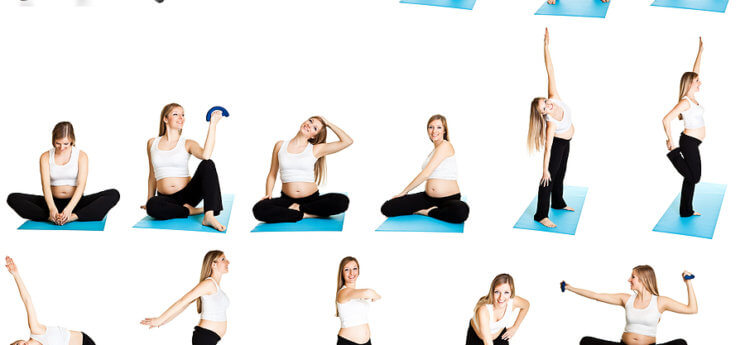Working out is hard work. So it might seem a little counterintuitive that pregnancy exercise won’t just give you more energy, but is actually good for your baby, too. “It’s common to be especially cautious if you’re pregnant for the first time,” says Tasha Lawton, a fitness expert and creator of the pregnancy Pilates DVD Pregalates. “But pregnancy exercise will help balance your hormone levels, making you more likely to feel good physically and mentally.”
Pregnancy exercise safety
For low-risk pregnancies, 30 minutes of daily exercise is almost always OK. In fact, your doc will probably encourage it, since pregnancy exercise boosts your energy, reduces stress, helps you sleep better, and makes for a smoother labor. (Just be sure to get her go-ahead first.)
The two essentials to bear in mind? Keep your body temperature below 101°, and make sure your heart rate doesn’t exceed 140 beats per minute. That means steering clear of outdoor workouts on really hot days during a summer pregnancy, and generally sticking with low- or medium-impact activities like walking, swimming, and yoga.
And of course, contact sports where you’re more likely to fall or take a hit are out, too.
First trimester pregnancy exercise
Since you’re tired and coping with morning sickness, the first trimester might not feel like the easiest time for pregnancy exercise. But staying active might help you more than you think: Moderate exercise can pump out feel-good endorphins and lower levels of your stress hormones, says Lawton. That can translate to less nausea and more energy.
During your first trimester, it’s safe to perform pregnancy exercises while lying on your back. Lawton suggests doing a modified version of The Hundred, a signature Pilates move that’ll help you build the core strength to cope with labor pains and make childbirth easier.
Laying on a yoga mat, extend your arms straight out by your sides and place your legs in a table top position (like you’re sitting in a chair) with feet in the air. Pump your arms up and down while inhaling for five breaths and exhaling for five breaths, 100 times total.
Second trimester pregnancy exercise
As your belly gets bigger, your pregnancy exercise routine will start to change. Back pain might start to be more common as your lower spine curves, and swimming is one of the most effective ways to find relief. It’ll also improve circulation and boost muscle tone—a big plus, since heavy weight lifting is no longer a good idea.
If you feel comfortable doing so, it’s also safe to jog and bicycle, but skip any exercises that have you laying flat on your back, since it can restrict blood flow to the baby.
Third trimester pregnancy exercise
Extra weight and more intense back pain can make it difficult to stay comfortable in the third trimester. If you’re up for it and your doc gives the OK, cardio workouts like walking and jogging are still safe, says Lawton.
Stretching, too, is another third trimester pregnancy exercise that can help you relax. Specifically, spine stretches will target your core muscles, easing back discomfort. Sit on the floor or a mat with your legs straight in front of you, hip-width apart.
Lean forward, and squeeze your shoulder blades together. Slowly breathe in, lean back in upright position, then breathe out. Repeat as desired.




